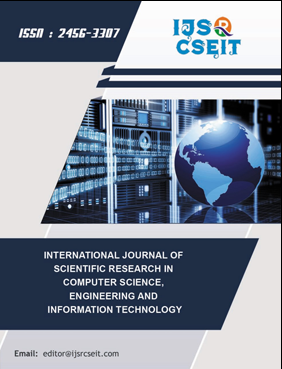Machine Learning in Cybersecurity : Applications, Challenges and Future Directions
DOI:
https://doi.org/10.32628/CSEIT24102125Keywords:
Machine Learning, Cybersecurity, Adversarial Attacks, Data Poisoning, Malware Classification, Threat Intelligence, Spam Detection, Phishing DetectionAbstract
Machine learning (ML) is transforming cybersecurity by enabling advanced detection, prevention and response mechanisms. This paper provides a comprehensive review of ML's role in cybersecurity, examining both theoretical frameworks and practical implementations. It outlines the emerging threats targeting ML models, such as adversarial attacks, data poisoning and model inversion attacks and discusses state-of-the-art defense strategies, including adversarial training, robust architectures and differential privacy. Additionally, the paper explores various ML applications in cybersecurity from intrusion detection to malware classification, highlighting their impact on enhancing security measures. An anomaly inference algorithm is proposed for the early detection of cyber-intrusions at the substations. Cybersecurity has become a vital research area. The paper concludes with a discussion on the key research directions and best practices for creating secure and resilient ML systems in a data-driven world. This paper delves into how Machine Learning (ML) revolutionizes cybersecurity, empowering advanced detection, prevention, and response mechanisms. It offers a thorough exploration of ML's pivotal role in cybersecurity, encompassing theoretical frameworks and practical applications. It addresses emerging threats like adversarial attacks and data poisoning, alongside cutting-edge defense strategies such as adversarial training and robust architectures.
📊 Article Downloads
References
Xi, B. (2020). Adversarial machine learning for cybersecurity and computer vision: Current developments and challenges. Wiley Interdisciplinary Reviews: Computational Statistics, 12(5), e1511. DOI: https://doi.org/10.1002/wics.1511
Al-Mansoori, S., & Salem, M. B. (2023). The role of artificial intelligence and machine learning in shaping the future of cybersecurity: trends, applications, and ethical considerations. International Journal of Social Analytics, 8(9), 1-16.
Sarker, I. H. (2023). Machine learning for intelligent data analysis and automation in cybersecurity: current and future prospects. Annals of Data Science, 10(6), 1473-1498. DOI: https://doi.org/10.1007/s40745-022-00444-2
Shaukat, K., Luo, S., Varadharajan, V., Hameed, I. A., Chen, S., Liu, D., & Li, J. (2020). Performance comparison and current challenges of using machine learning techniques in cybersecurity. Energies, 13(10), 2509. DOI: https://doi.org/10.3390/en13102509
Yi, F., Jiang, B., Wang, L., & Wu, J. (2020). Cybersecurity named entity recognition using multi-modal ensemble learning. IEEE Access, 8, 63214-63224. DOI: https://doi.org/10.1109/ACCESS.2020.2984582
Ford, V., & Siraj, A. (2014, October). Applications of machine learning in cybersecurity. In Proceedings of the 27th international conference on computer applications in industry and engineering (Vol. 118). Kota Kinabalu, Malaysia: IEEE Xplore.
Iyer, S. S., & Rajagopal, S. (2020). Applications of machine learning in cybersecurity domain. In Handbook of research on machine and deep learning applications for cybersecurity (pp. 64-82). IGI Global. DOI: https://doi.org/10.4018/978-1-5225-9611-0.ch004
Apruzzese, G., Laskov, P., Montes de Oca, E., Mallouli, W., Brdalo Rapa, L., Grammatopoulos, A. V., & Di Franco, F. (2023). The role of machine learning in cybersecurity. Digital Threats: Research and Practice, 4(1), 1-38. DOI: https://doi.org/10.1145/3545574
Juneja, A., Juneja, S., Bali, V., Jain, V., & Upadhyay, H. (2021). Artificial intelligence and cybersecurity: current trends and future prospects. The Smart Cyber Ecosystem for Sustainable Development, 431-441. DOI: https://doi.org/10.1002/9781119761655.ch22
Ten, C. W., Hong, J., & Liu, C. C. (2011). Anomaly detection for cybersecurity of the substations. IEEE Transactions on Smart Grid, 2(4), 865-873. DOI: https://doi.org/10.1109/TSG.2011.2159406
Liu, H., & Lang, B. (2019). Machine learning and deep learning methods for intrusion detection systems: A survey. applied sciences, 9(20), 4396.
Xu, R., Baracaldo, N., & Joshi, J. (2021). Privacy-preserving machine learning: Methods, challenges and directions. arXiv preprint arXiv:2108.04417.
Linardatos, P., Papastefanopoulos, V., & Kotsiantis, S. (2020). Explainable ai: A review of machine learning interpretability methods. Entropy, 23(1), 18. DOI: https://doi.org/10.3390/e23010018
Saad, S., Briguglio, W., & Elmiligi, H. (2019). The curious case of machine learning in malware detection. arXiv preprint arXiv:1905.07573. DOI: https://doi.org/10.5220/0007470705280535
Liu, H., & Lang, B. (2019). Machine learning and deep learning methods for intrusion detection systems: A survey. applied sciences, 9(20), 4396. DOI: https://doi.org/10.3390/app9204396
Montasari, R., Carroll, F., Macdonald, S., Jahankhani, H., Hosseinian-Far, A., & Daneshkhah, A. (2021). Application of artificial intelligence and machine learning in producing actionable cyber threat intelligence. Digital forensic investigation of internet of things (IoT) devices, 47-64. DOI: https://doi.org/10.1007/978-3-030-60425-7_3
Gandotra, E., & Gupta, D. (2021). An efficient approach for phishing detection using machine learning. Multimedia Security: Algorithm Development, Analysis and Applications, 239-253. DOI: https://doi.org/10.1007/978-981-15-8711-5_12
Downloads
Published
Issue
Section
License
Copyright (c) 2024 International Journal of Scientific Research in Computer Science, Engineering and Information Technology

This work is licensed under a Creative Commons Attribution 4.0 International License.




